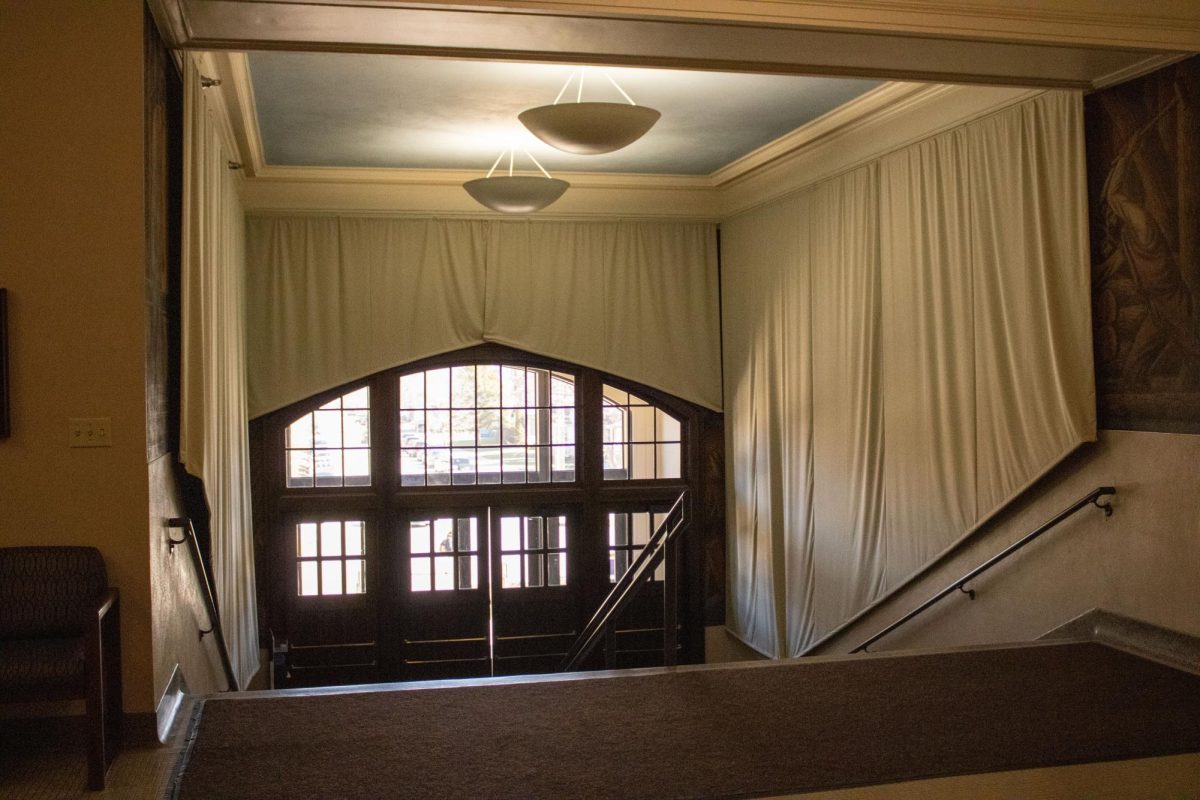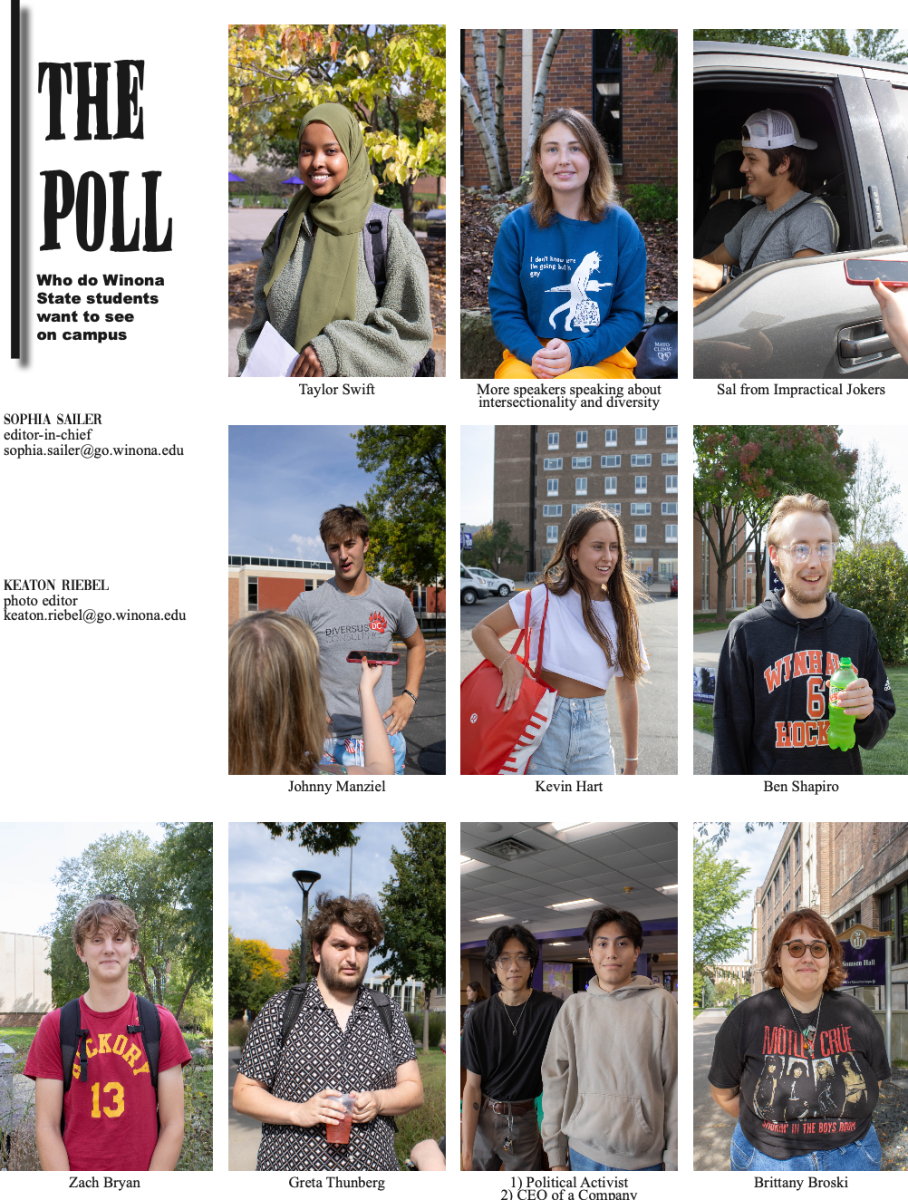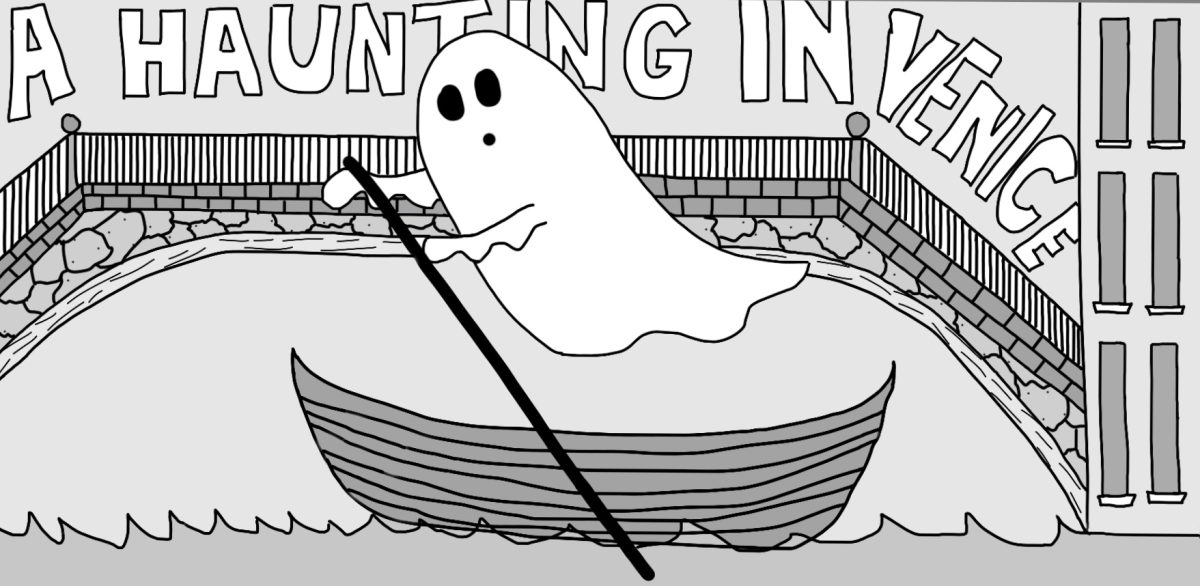I bike in the winter, and no, I am not one of those aggressive endurance athletes. I am simply a college student that prefers to bundle up a little extra to avoid being outside for longer.
But there’s been one thing standing in my way recently.
No, it is not the ice – I avoid that when possible or just bike slowly – and no it is not the surprising lack of true bike lanes, rather than shared shoulder lanes, in Winona.
It is the state of the bike racks on campus.
You see, it appears that in the process of plowing the pedestrian walkways after every snow, campus plow operators direct a significant amount of snow straight into the bike racks. This renders them incredibly difficult to use – with mounds of snow on either side of the rack, forcing one to wade through calf deep cold to access the rack – or completely useless – with the peaks of these mounds covering any usable space. And this happens every snowfall.
I think all parties agree that environmentalism is a keystone of this university. In fact, the Winona State University Bicycle Task Force stands to “encourage greater use of bicycles to and from campus as a means to reduce vehicle traffic and to address various other issues relating to maintaining the beauty, safety, and integrity of the campus grounds,” according to their website.
Therefore, a solution to remedy these frozen bike racks would benefit not only the student and community cyclists in the area but also the environment and the philosophical pillars upon which this university rests.
I shall now therefore humbly propose my own thoughts, which I hope will not be liable to the least objection by student or faculty, community member of administrative staff.
I have been assured by a very knowing student of my acquaintance that a large pile of snow can be melted down and eliminated completely by a simple cloud of flame, and I do therefore humbly offer it to administrative consideration that cyclists at Winona State be permitted to carry flamethrowers in order to properly utilize the bike racks during the wintertime.
There are several steps that the university could take to employ this solution.
My first proposal is that each student be supplied a ready-to-use flamethrower as part of regular tuition. Commercially available flamethrowers run anywhere from $1,500 to $2,000, which would hike up tuition rates around 20 percent for all students paying in state tuition and roughly 14 percent for all out of state students.
This of course, might be considered an undue financial burden for non-cyclists, especially those who already invest in parking passes, so my second proposal would be an opt-in program for 100 regular cyclists each year. These 100 students could easily clear the bike racks for the rest of the cyclists, and the cost of the flamethrowers could be spread out as a fee to the rest of the student population.
Assuming a student population of 8,500, in-state students would only see a 0.23 percent increase in tuition and out of state students would see a 0.14 percent increase.
But there remains still a possibility that during extended periods of time, such as winter break, these 100 students might not be present on campus, which leads me to my third proposal, stationed flamethrowers.
The Winona State campus contains roughly two dozen bike racks, and a flamethrower could be stationed and chained to each bike rack for use when necessary. Not only would this cut down the tuition hike to less than a tenth of a percent, but it would also ensure every cyclist would have access to a ready-to-use flamethrower at any given time of the year.
Many readers may have noticed none of these figures include napalm mix for the flame throwers to set aflame and propel at the snow. It’s a valid point; however, as the throwers would be used fairly infrequently, and as a typical napalm mix runs for around $250, the figure involved would not be notable in the grand scheme of things.
I will also address the issue of safety, a bogus argument popularized by television and movies. As Brooks E. Brooks explains in his 2003 book “The Chemical Warfare Service: chemicals in combat,” the modern flamethrower, first developed around 1915, has come a long way since its WWI ancestor. Today the flamethrower is safe and effective if used properly.
I can think of not one objection that will possibly be raised against this proposal unless it should be urged that the area cyclists be significantly discouraged in their cycling activities. Therefore, let no person speak of other solutions: of installing differently styled bike racks that might be more usable in the winter; of moving or installing new bike racks in locations where it is not necessary to pile snow; of plowing the snow onto the grass where other snow is frequently plowed; of plowing snow to the sides of the walkways and leaving the bike racks clean; of containing the snow to part of the bicycle rack rather than the entire rack.
Therefore I repeat, let no person, be they student, faculty or administrative member, object to this solution till he or she has at least some glimpse of hope that there will ever be a legitimate attempt to put them into practice.
I sustain, with the deepest sincerity, that I have no personal interest in employing this proposal other than to benefit Winona State cyclists, Winona area cyclists and the environment as a whole. I hope that the Winona State Bicycle Task Force and the Winona State Administration as a whole take note of my proposal and employ a solution that they deem fit for our community.
By Colin Kohrs













































